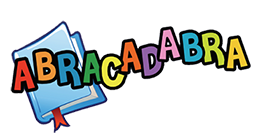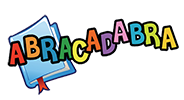Tips
Parents and guardians play a significant role in the development of their children’s literacy skills. Below you will find tips and ideas for helping your children practice and improve these skills.
General Tips
Read with your child every day.
- When parents and children read together, it helps the child to practice reading with expression, speed, and confidence.
- Before, or as you are reading, talk about the pictures. Try to predict what is going to happen.
- Have your child echo you as you read the story. Read one sentence at a time while your child tracks each word with the book. Then the child copies what the parent has read.
Show an interest in reading yourself. Let your child see you reading as a fun hobby. Talk to your child about something interesting you're reading.
Integrate reading into your family's daily lifestyle by reading signs, posters, T-shirts, cereal boxes etc. together with your child.
- As a daily challenge, see if he or she can find a word they don’t yet know. Try to work that word into five different sentences throughout the day.
Visit your local library with your child once a week.
Pick books that are meant for your child’s reading level. Our tool READS, indicates the difficulty level of the story. You can also ask your local librarian to help you determine the difficulty level.
If you’re having trouble selecting book, think about the type of book your child enjoyed in the past.
- Genre: Which genre is your child’s favourite book? Try finding similar stories. For example, if they like fairy tales, read other fairy tales with them. If they like learning about new things, look for non-fiction books.
- Themes and topics: Are there particular animals they love? Do they like cars and trains? Usually there will be several books that feature the same animals, items or places that can spark your child’s interest in a new story.
- Authors: If there is a book your child loves, see if the author wrote other children’s stories.
To boost your child’s confidence, start your ABRACADABRA session with an activity he or she has already succeeded at.
Even with a fun program like ABRACADABRA, children may have trouble concentrating after thirty minutes. Limit the amount of time using the program in one sitting.
If you’re not sure which level to choose, let your child pick his or her own level to begin. You can suggest a higher or lower level depending on how well they did.
If your child is using ePEARL along with ABRA, regularly access their ePEARL and provide feedback on their progress.
Try watching TV with the subtitles turned on.
Specific Tips
Click on one of the four broad categories to discover specific tips.
Alphabetics
Play word games, like changing one letter in a word. For example, car > can > cat. Start by always changing the same letter, but as your child gains confidence, change any letter in the word. For example cat > hat > hut.
Practice saying tongue twisters to help your child with their pronunciation. Here are a few to help you get started:
- "She sells seashells by the seashore."
- "I saw a kitten eating chicken in the kitchen."
- "How much wood could a woodchuck chuck if a woodchuck could chuck wood?"
As they are learning the alphabet, point out other words that start with the same letter as their name or another family member’s name.
Similarly, you ask them to find an object around them that starts with the same letter as their name.
Fluency
When reading to your child, give each character a different voice. This will make it more fun, and help them learn about expression.
Comprehension
As you’re reading, pause every so often and ask questions.
- See if your child can figure out what will happen next.
- Ask your child's opinion about a problem presented in the story.
- Go beyond the story by asking your child to consider characters’ motivations, what happens after the story, etc.
- Discuss alternative endings for the story.
Take turns telling a story. Describe one event, and then have your child continue to the story for awhile, before you jump in again.
Writing
Write a story with your child. For non-readers, let them draw the story, then ask them about the story they have created. You can be the scribe, writing out the story to go along with the drawing.
Ask them to help you write the grocery list, or a to-do list for the day.
Have your child write down one good thing that happened to them during the day. Keep this list and at the end of the month, you can read them together to remember all the good things that happened recently.
Alphabetics
Play word games, like changing one letter in a word. For example, car > can > cat. Start by always changing the same letter, but as your child gains confidence, change any letter in the word. For example cat > hat > hut.
Practice saying tongue twisters to help your child with their pronunciation. Here are a few to help you get started:
- "She sells seashells by the seashore."
- "I saw a kitten eating chicken in the kitchen."
- "How much wood could a woodchuck chuck if a woodchuck could chuck wood?"
As they are learning the alphabet, point out other words that start with the same letter as their name or another family member’s name.
Similarly, you ask them to find an object around them that starts with the same letter as their name.
Fluency
When reading to your child, give each character a different voice. This will make it more fun, and help them learn about expression.
Comprehension
As you’re reading, pause every so often and ask questions.
- See if your child can figure out what will happen next.
- Ask your child's opinion about a problem presented in the story.
- Go beyond the story by asking your child to consider characters’ motivations, what happens after the story, etc.
- Discuss alternative endings for the story.
Take turns telling a story. Describe one event, and then have your child continue to the story for awhile, before you jump in again.
Writing
Write a story with your child. For non-readers, let them draw the story, then ask them about the story they have created. You can be the scribe, writing out the story to go along with the drawing.
Ask them to help you write the grocery list, or a to-do list for the day.
Have your child write down one good thing that happened to them during the day. Keep this list and at the end of the month, you can read them together to remember all the good things that happened recently.

